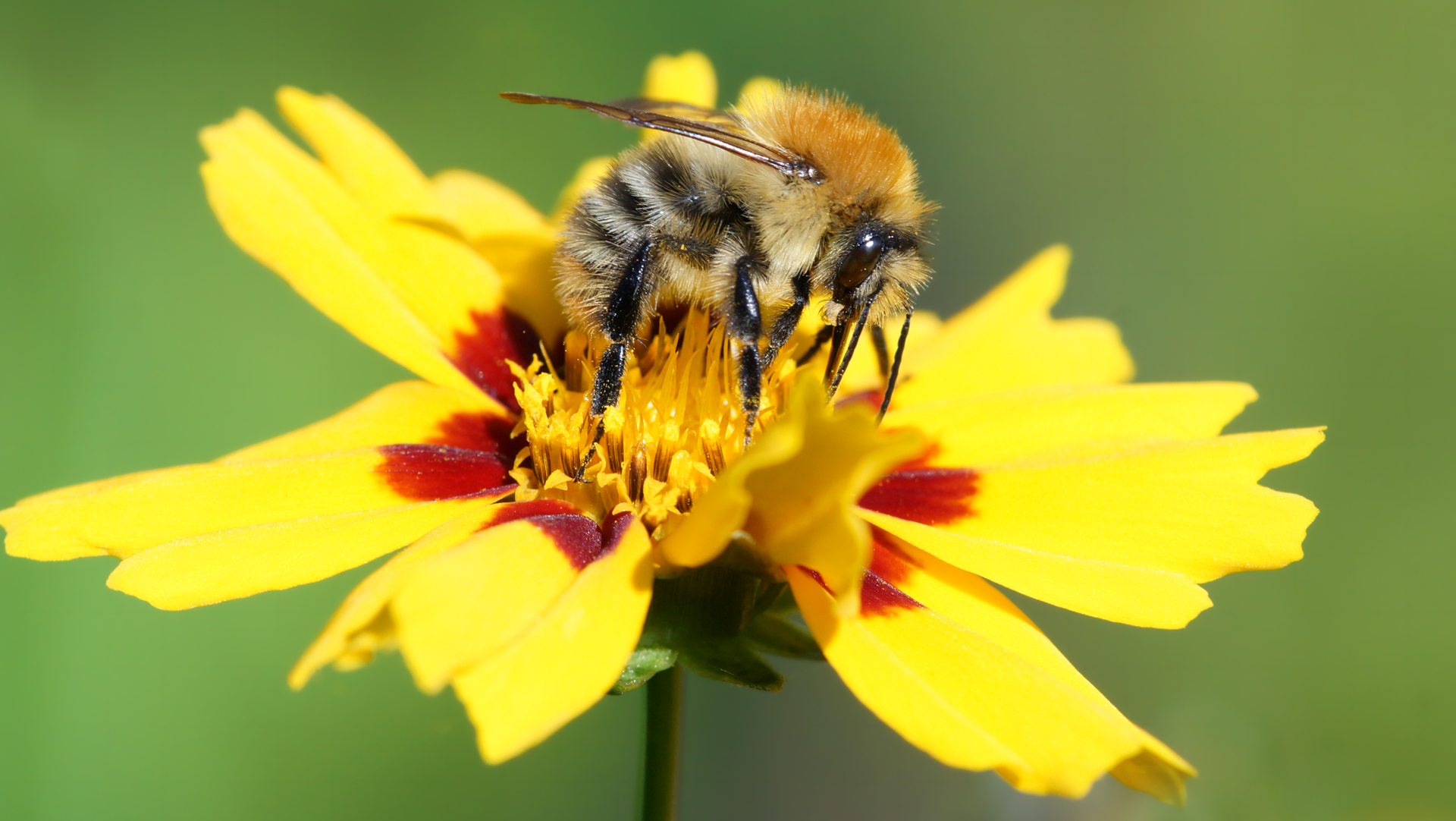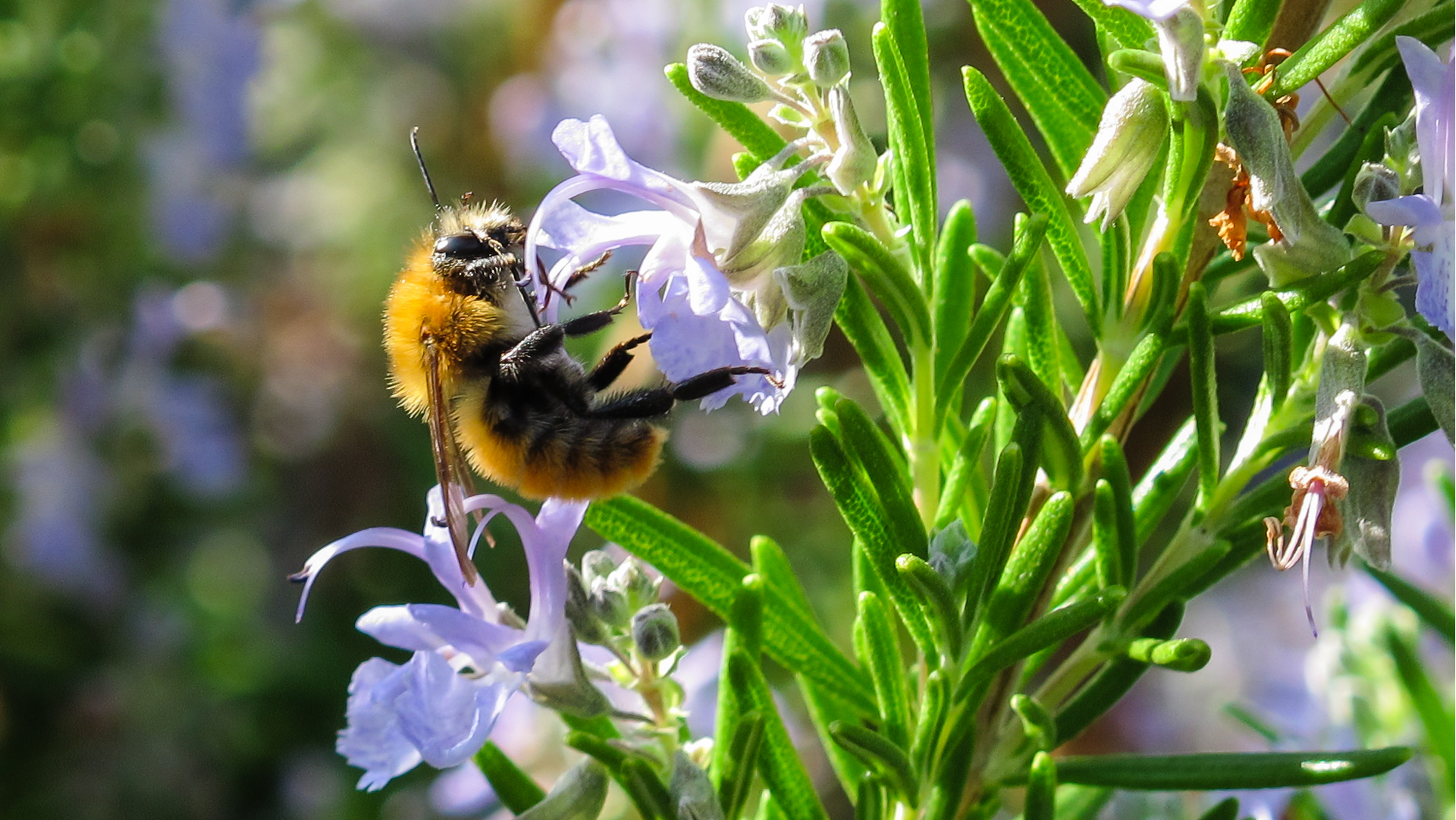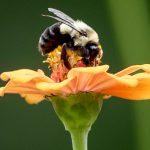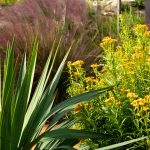These powerful pollinators play a special role in our environment. But you don’t need beekeeper skills to entice them to your landscape.
By Molly Keck
We all know honeybees are extremely important, but many do not realize that in the United States there are over 2,000 species of native bees. Many of them are better at pollinating native plants like blueberries and tomatoes than honeybees, and most of them look more like wasps or flies.
You don’t need beekeeper skills to encourage bees to visit your landscape and pollinate your plants. Providing plants that attract pollinators is easier than you think.
Join Nathan Riggs and Gail Gallegos this Thursday for Bees: What You Didn’t Know to learn more about attracting these important pollinators.

Bees see the colors white, yellow, blue and purple better than any other color so fill your landscape with some coreopsis, ‘New Gold’ lantana, beebalm and various Salvia. You’ll also attract beneficial insects, including pollinators, by planting herbs and allowing them to flower.
The tiny white and yellow flowers on dill and parsley, and purple flowers on anise hyssop are excellent nectar sources for beneficial pollinators! Blue flowers on rosemary are definitely bee magnets.

Bees are active during the day so be sure to take special care around bee-loving plants. While they won’t be affected by liquid product applied to foliage once it’s dry (avoid spraying the flowers and buds), spraying liquid pesticide on plants when bees are actively foraging for food is extremely harmful. The bees end up taking the pesticide back to their hive and spreading it around, possibly killing the whole group.
When using systemic products, follow the label instructions very carefully. Much misinformation can be found online about the harmful effects of systemic products on bees so make sure to get your information from an educationally based resource, not a gardening blog.
Bees play a special role in our environment and landscape. Let’s do everything we can to care for and promote them.
Molly Keck is the Integrated Pest Management Specialist for the Texas A&M AgriLife Extension Service in Bexar County.




